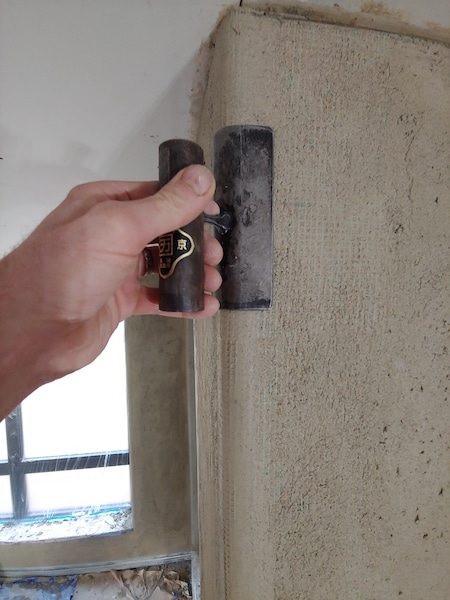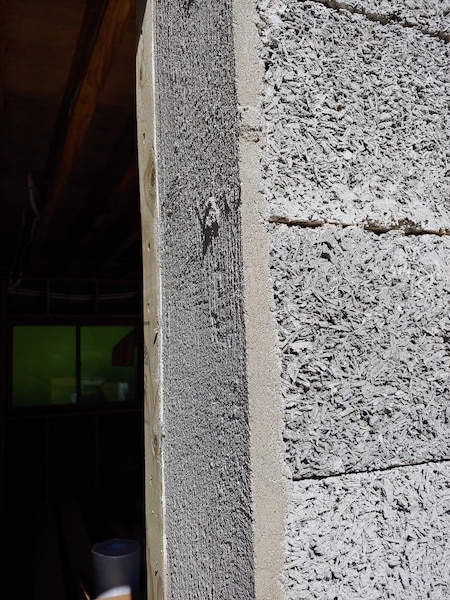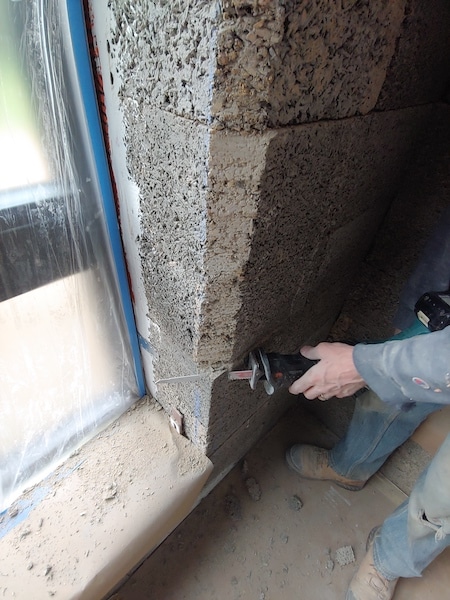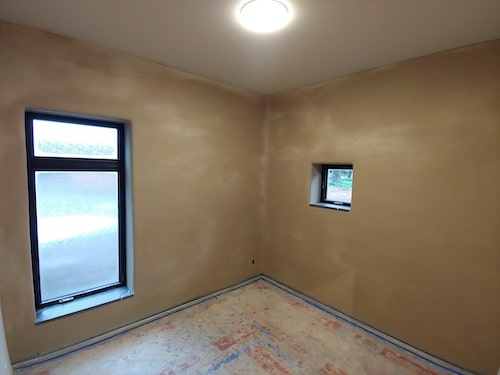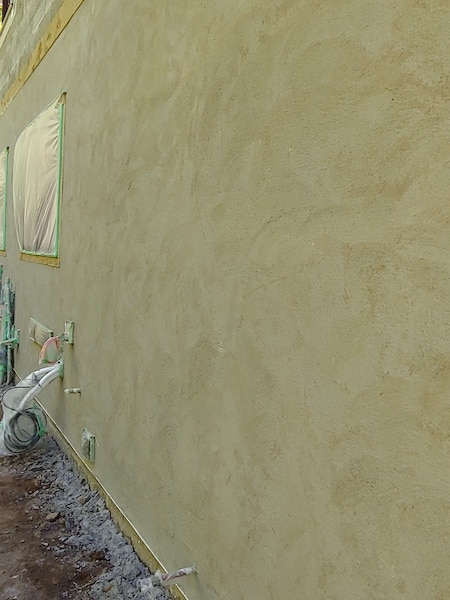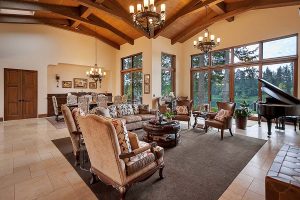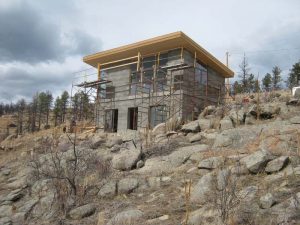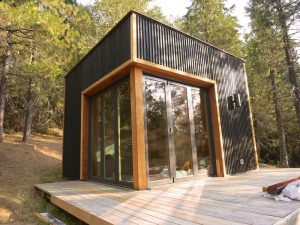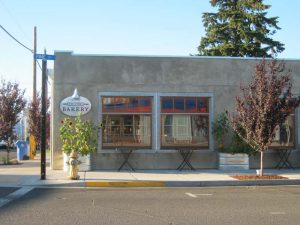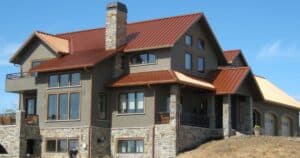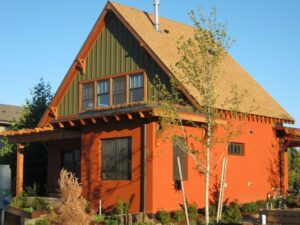Beyond Beauty: Plaster and Stucco are Natural Winners for Sustainable Walls:
Many people love plasters and stucco as sustainable building finishes because they look nice. But the advantages of a plaster and/or stucco for walls instead of paint go far beyond appearances. The ingredients in these finishes are found in nature, and they have been used as a building finisher for thousands of years. The basic composition of both stucco and plaster is water, sand and binder (typically lime, clay and/or cement). Traditional recipes and increasing numbers of modern systems use lime and /or clay instead of cement. Adding lime to a modern mix can increase its workability.
Advantage: Vapor and Moisture Management
Perhaps one of the best advantages of plaster and stucco is that they are the best at absorbing and releasing vapor and moisture. Breathable walls help protect your home’s air quality. They easily take pigments, making them available in a range of colors. Both are fire-resistant and absorb sounds, leading to a more quiet home. If there is one disadvantage to stucco or plaster, it’s that doing it well can be difficult and is best done by skilled professionals (especially exterior stucco and interior finish coats). It goes on with care in two to three layers, and is labor intensive. The skill and labor required for good application is what often makes these finishes more expensive than other finishes.
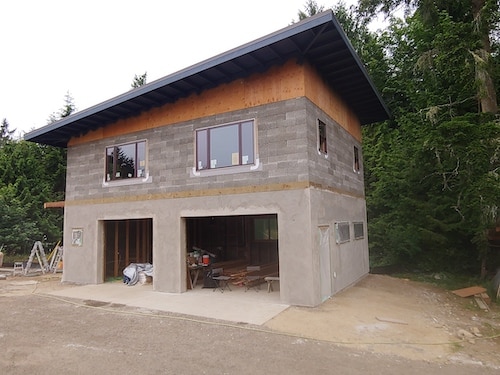
Stucco vs Plaster, what’s the difference?
Generally speaking, most people refer to stucco as a coating for the outside of a building and plaster as a coating for interior walls, although plaster can be used either inside and out. Stucco is a rougher texture and plaster is a smoother texture. The ingredients in both stucco and plaster are pretty much the same — lime, clay or cement, water, and sand (with many possible additives).
Natural Lime Plaster
Natural lime plaster is made from finely ground limestone, a sedimentary rock, that is fired in a kiln. Historically, the use of natural lime fell out of favor when portland cement became popular in the 1800s. Natural lime is having a resurgence now. Portland cement is made from limestone, as well, with clay and other mineral additives. It is also cooked in a kiln at higher temperatures than lime.
Natural lime plaster tends to be more workable than cement plasters, are relatively hard surfaces, and have advantages. Lime provides the hardness of cement, but is easier to repair, is more carbon friendly, and is more vapor permeable. Another advantage of natural lime plaster is that plaster application is much more forgiving than stucco application. This makes it more accessible to homeowners.
Faswall can Source top quality Secil NHL for Natural Lime Plaster
Shelterworks (Faswall’s parent company www.healthyshelterworks.com) is bringing the top quality Natural Hydraulic Lime or NHL (Secil brand) to the United States from Portugal. Secil is one of the top European cement brands, and offers great workability. NHL is an ideal base for stucco and plaster for breathable walls made out of Faswall. We recommend Limestrong artisan plaster for finish color coats, with their large selection of pigmented colors. Limestrong also offers a list of plaster and stucco professionals and trains professionals and DIYers who want to invest in learning quality technique.
As you might guess, natural lime stucco is the same as natural lime plaster. The difference is it is formulated specifically to be used externally on homes and other structures. Stucco and plaster can be applied to many types of block and natural wall materials, including Faswall, cement blocks, straw, adobe, mud, and more. They both have great advantages in maintaining vapor permeability.
Benefits Of Plastering Walls
Whether the plaster is used on the interior or exterior, it has many advantages over modern drywall and other wall finishes.
Plaster and Stucco are Non-Toxic
Unlike most paints, plaster does not contain VOCs or other toxic materials. Coloring plaster and stucco is usually done by adding pigments. If pigments are used, they are often natural. Applying plaster on interior walls also doesn’t create any harmful dust.
Durability
A properly mixed and applied plaster is stronger and more durable than drywall. Plaster is also resistant to knocks and dents.
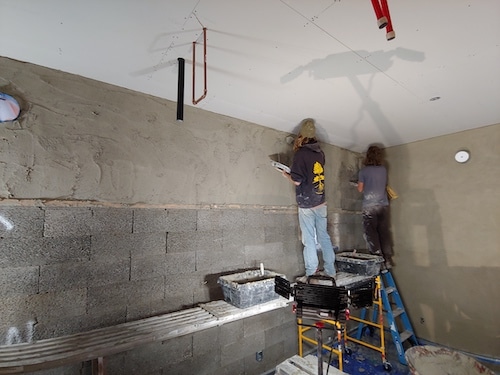
Easy Installation
Faswall walls can be finished directly with stucco or plaster on both sides. The success lies in the fact that Faswall is porous, which means that stucco or plaster adheres easily (more on that in the next section!). Natural lime plaster application over Faswall requires no extra wall finishings, vapor barriers, or other moisture mitigation measures, which means less toxins in your home. Plaster doesn’t need to be sanded, and it can go on quickly.
Insulation, Fire-resistant, Soundproofing
Interior plaster provides better insulation, fire resistance, and soundproofing than drywall. Because moisture vapor from your homes passes through it (also known as breathability), it doesn’t harbor mold or mildew under most conditions. Clients can hear the difference in homes with natural lime plaster interior walls and/or stucco walls outside, and often remark on how pleasantly quiet and sound insulating a faswall home with stucco and/or plaster is.
Aesthetics and Style
Plaster simply “feels” nice, which can be difficult to describe until you’ve actually been inside a home with plaster or stucco walls. When you touch it, it is harder, cooler to the touch, and tougher than drywall. It’s aesthetically pleasing in many ways, and increases the resale value of your home, as many people truly appreciate the skill involved in quality plasterwork.
Using Stucco & Plaster Systems With Faswall
The mineral content of Faswall is made up of cements and lime. When you use a lime or cement plaster or stucco on Faswall, it chemically fuses with it. The crystals from the lime and the cement plaster grow into the Faswall and become a monolithic membrane, or, in other words, they become chemically bound. This creates a durable, and quality surface that adds to the house longevity and value.
Other wall finishings are just applied to the surface — they are glued on or they have some other sort of mechanical bond, and this makes them weaker. Plaster and stucco can be durable wall coverings in all climates — wet, dry, hot, or cold.
As moisture moves through a Faswall wall coated with plaster or stucco, the system allows the moisture to move through it and out without it getting “stuck” anywhere. This makes the walls resistant to mildew, rot and fungus regardless of humidity.
Because the vapor is absorbed by the Faswall and then released, it can be perceived almost like a vapor “bank.” Whether your weather is wet or dry, the walls absorb and release the moisture vapor so what you experience inside your home is more of a steady state of even, stable relative humidity. Different plasters have different abilities to absorb and release vapor and moisture, but in general, they absorb it and release it in a very steady way.
Got questions about your plaster or stucco finish for your Faswall project? Please contact us and we can talk about what would work best for you.


